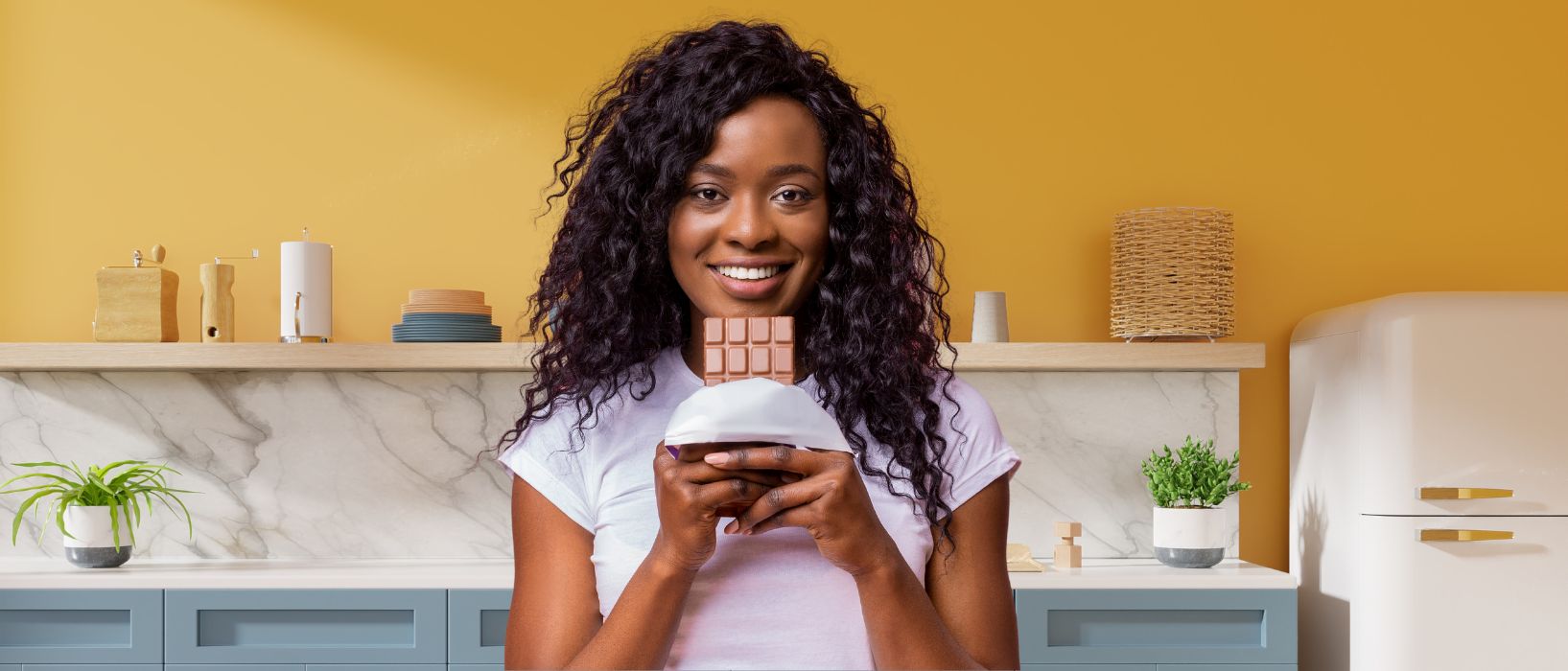Who doesn’t like chocolate? It’s a staple of most household diets, in fact, according to the latest research by Mintel, in the UK only 5% of Brits say they never eat chocolate and over 80% of Americans ate chocolate in 2020.
Did you know that chocolate wasn’t always eaten and was once more valuable than gold?
Cacao beans were valued higher than gold dust during the Mayan era and were used as money.
The Mayans even restricted cacao tree cultivation to stop people from growing their own currency!
Chocolate was a treat that was usually consumed as a bitter liquid up until 1847.
After blending cocoa butter, sugar, and chocolate liquor, it was the British chocolate manufacturer Fry & Sons who popularised the idea of “eating chocolate.”
Milk chocolate, the most popular type of chocolate today didn’t arrive until 1875 after Daniel Peter, a Swiss chocolatier spent eight years trying to make a recipe.
He finally realised that adding condensed milk was the answer and here we are nearly 150 years later still enjoying his discovery!
Today the world’s number one chocolate brand is Ferrero Roche and the largest chocolate consumers in the world are the Germans who eat 11 KG of chocolate annually!

There are however downsides to our favourite sweet treat.
Making chocolate is resource intensive.
One pound of chocolate is made from 400 cacao beans meaning one tree only produces only 1 to 1.5 KG of chocolate each year.
Because each tree produces so little chocolate, huge areas of land are deforested and replaced with cocoa trees.
The pods are also hand-harvested so are people-intensive.
The cocoa pods are mainly grown and picked in West Africa and often children are employed by cocoa farmers to assist with the cultivation, harvesting, and transportation of cocoa beans.
Once the pods are picked, it takes 10,000 litres of water to produce one KG of chocolate. Add to that manufacturing and shipping and you also get a footprint of 5 KG of CO2e produced for every 1 KG of chocolate!
Be the solution... Reduce! Repair! Regive!
These numbers might seem small but when you consider the bigger picture it creates some mind-boggling numbers!
Did you know the world’s average chocolate consumption is 0.9 KG per person per year?
With 7.7 billion people on the planet this means 6.9 billion KG of chocolate is eaten every year, creating 34.5 billion KG of harmful CO2e.
So what can you do to play your part?
You can look for fair-trade and eco-labelling on your chocolate (if it doesn’t have one, don’t buy it, is a good rule of thumb).
You can also look for the World Cocoa Foundation membership (you can see some of the members here).
This is an organisation that was set up with three goals: increasing farmer income, combating child and forced labour, and ending deforestation in cocoa.
The Play It Green team loves chocolate too and we did some testing to find chocolate that is great for the planet, as well as your taste buds, here are our favourite three (in no particular order).

Beyond Good, a company that was founded in 2008, goes above and beyond to improve the sustainability of the chocolate industry.
They use small-scale farmers that receive fair trade payments to provide the cocoa beans for their lovely chocolate.
In order to maintain the money within the cocoa industry, the company also follows direct trade policies and has cut out middlemen.
Its products are all vegan, kosher, soy-free and gluten-free, making Beyond Good one of the most environmentally friendly chocolate manufacturers.
Our particular favourites were their salted caramel bar and Madagascar dark chocolate bar.
Another great brand we love is Doisy & Dam which was set up in 2014 as an ethical brand looking to change the bad practices found in the chocolate industry.
They are now a B-Corp company meaning they are a force for good and are committed to positive environmental and social impact.
All their ingredients are naturally grown and sustainable and they don’t use palm oil in any of their scrumptious products.
Their vegan truffles are amazing!
The final brand we love is Tony’s Chocolonely.

The Dutch company first launched in the UK in 2005 and has stuck to its positive social and environmental strategy with a huge purpose: to eradicate slavery from the chocolate industry.
They also aim to make the entire chocolate-making process fairer and more ethical and to raise the standard of living of cocoa farmers.
The chocolate firm splits its bars into different-sized pieces to emphasise how the money made by the cocoa and chocolate industries is allocated unfairly.
Their supply chain is also designed in such a way that it ensures everyone within it gets paid their fair share.
If you want to try some amazing chocolate that you can be certain is made in the right way you should try their vegan dark almond and sea salt bar or their dark milk pretzel toffee!
To help you with your purchase, you can use code DRMWAOOV at checkout for a great saving on some extremely tasty sustainable chocolate!











